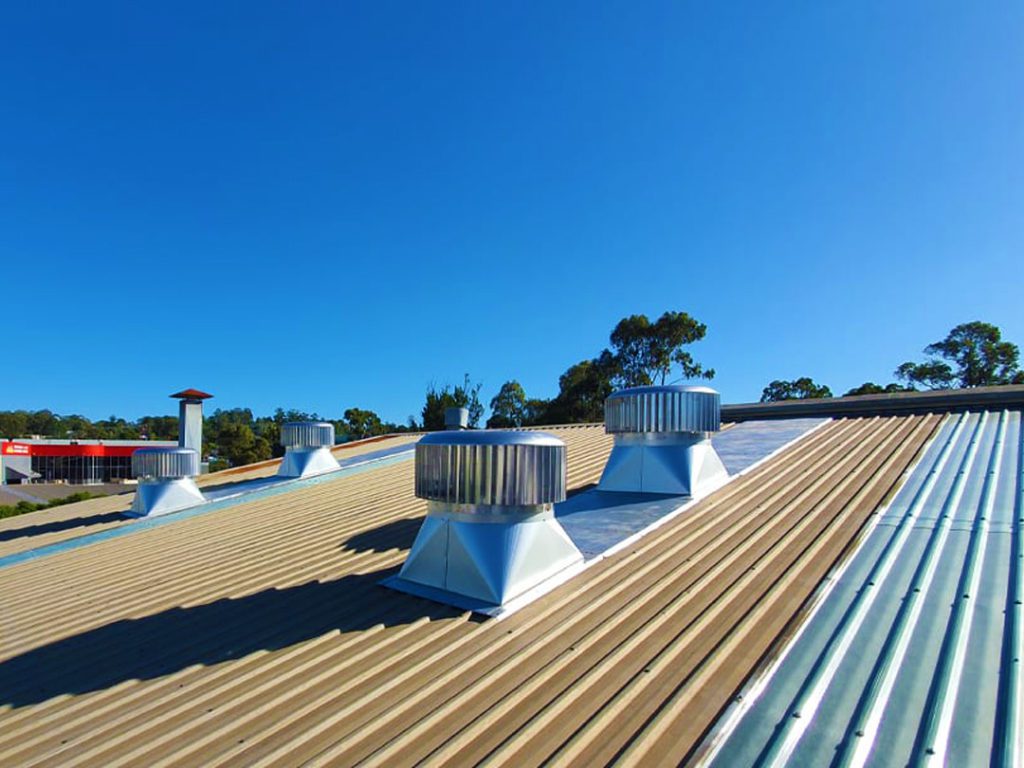Commercial Roof Ventilation Systems for Green Buildings: A Comprehensive Guide
Introduction
In the era of sustainable construction and environmental consciousness, the design and maintenance of commercial buildings are evolving rapidly. Among the many aspects of green building design, proper ventilation is often overlooked but plays a crucial role in creating a healthy and energy-efficient indoor environment. This article explores the significance of commercial roof ventilation systems in green buildings, their types, benefits, and the technological advancements driving their adoption.
Importance of Ventilation in Green Buildings
Ventilation is a fundamental component of any building, but it holds particular significance in green or sustainable buildings. Green buildings are designed to be energy-efficient and environmentally friendly, aiming to minimize their carbon footprint and reduce energy consumption. Proper ventilation contributes to these goals in several ways:
- Indoor Air Quality (IAQ): Green buildings prioritize the health and well-being of occupants. Effective ventilation helps maintain high IAQ by removing indoor pollutants, such as volatile organic compounds (VOCs), allergens, and odors. Clean, fresh air enhances occupant comfort and productivity.
- Energy Efficiency: Ventilation can account for a significant portion of a building’s energy use. In green buildings, energy-efficient ventilation systems minimize the energy required for heating and cooling, reducing operational costs and environmental impact.
- Thermal Comfort: Proper ventilation helps regulate indoor temperatures, preventing excessive heat buildup in summer and heat loss in winter. This reduces the need for mechanical heating and cooling systems, further enhancing energy efficiency.
- Moisture Control: Excess moisture can lead to mold growth, structural damage, and poor indoor air quality. Green buildings employ ventilation systems to manage humidity levels, preventing these issues.
- Sustainable Materials: The construction of green buildings often involves the use of sustainable and eco-friendly materials. Effective ventilation helps protect these materials from moisture-related degradation.
Types of Commercial Roof Ventilation Systems
Several types of commercial roof ventilation systems are used in green buildings, each with its unique characteristics and benefits. The choice of ventilation system depends on factors such as building design, climate, and specific goals. Here are some common types:
- Natural Ventilation:Natural ventilation relies on the principles of airflow driven by temperature differences and wind pressure. It involves strategically placed openings, such as windows, vents, or louvers, to facilitate the flow of fresh air. In green buildings, natural ventilation is a preferred choice as it requires minimal energy input.
- Mechanical Ventilation:Mechanical ventilation systems use fans, blowers, or HVAC systems to circulate air throughout the building. They are more common in larger commercial buildings and are often combined with natural ventilation for optimal energy efficiency. Green buildings incorporate energy-efficient mechanical ventilation systems to minimize power consumption.
- Solar-Powered Ventilation:Solar-powered roof vents harness energy from the sun to drive ventilation. These systems are highly sustainable and are particularly effective in sunny climates. They reduce the building’s reliance on grid electricity and promote renewable energy use.
- Heat Recovery Ventilation (HRV) and Energy Recovery Ventilation (ERV):HRV and ERV systems recover heat or energy from exhaust air to pre-condition incoming fresh air. This approach significantly reduces heating and cooling loads, making them ideal for green buildings aiming for energy efficiency.
- Green Roofs:Green roofs, or living roofs, feature a layer of vegetation on the building’s rooftop. They provide natural insulation, absorb rainwater, and enhance thermal performance. While they may not be considered traditional roof ventilation systems, green roofs contribute to overall building sustainability.
Benefits of Commercial Roof Ventilation Systems in Green Buildings
- Energy Efficiency: Ventilation systems optimized for green buildings reduce the need for mechanical heating and cooling, resulting in lower energy consumption and reduced greenhouse gas emissions.
- Indoor Air Quality: Proper ventilation ensures a constant supply of fresh air, which is crucial for maintaining a healthy and productive indoor environment.
- Moisture Control: Ventilation systems prevent excess moisture buildup, reducing the risk of mold growth and structural damage.
- Comfort and Productivity: A well-ventilated workspace enhances occupant comfort and productivity, leading to higher job satisfaction and reduced absenteeism.
- Sustainability: Green buildings with efficient ventilation systems contribute to overall sustainability goals by reducing resource consumption and promoting a healthier environment.
Technological Advancements in Commercial Roof Ventilation
The field of commercial roof ventilation has seen significant technological advancements in recent years, aligning with the growing demand for sustainable building solutions. Some notable innovations include:
- Smart Ventilation Control Systems: Advanced control systems utilize sensors and data analytics to optimize ventilation in real-time. These systems adjust airflow based on occupancy, outdoor conditions, and indoor air quality, ensuring efficient operation.
- Energy-Efficient Fans and Motors: New fan and motor technologies are designed for energy efficiency, reducing power consumption and operational costs. Variable-speed fans can adapt to changing ventilation needs, further improving efficiency.
- Integrated Building Management Systems (BMS): BMS platforms enable centralized control and monitoring of various building systems, including ventilation. Integration allows for coordinated operation and data-driven decision-making.
- Solar-Powered Ventilation: Solar-powered roof vents are becoming more accessible and cost-effective. These systems harness renewable energy to drive ventilation, reducing reliance on grid power.
- Heat Recovery and Energy Recovery Systems: Improved heat exchangers and materials enhance the efficiency of HRV and ERV systems, recovering more energy from exhaust air.
- Green Roof Technologies: Green roof systems are evolving with lightweight, low-maintenance options that make them easier to install and maintain on commercial buildings.
Conclusion
Commercial roof ventilation systems are indispensable components of green buildings, contributing to energy efficiency, occupant comfort, and sustainability goals. The choice of ventilation system should align with the building’s design, climate, and specific objectives. Technological advancements in this field continue to drive innovation, making it easier than ever to create environmentally friendly, energy-efficient, and comfortable commercial spaces. As green building practices become more widespread, the role of commercial roof ventilation in achieving sustainability objectives will continue to gain prominence.

